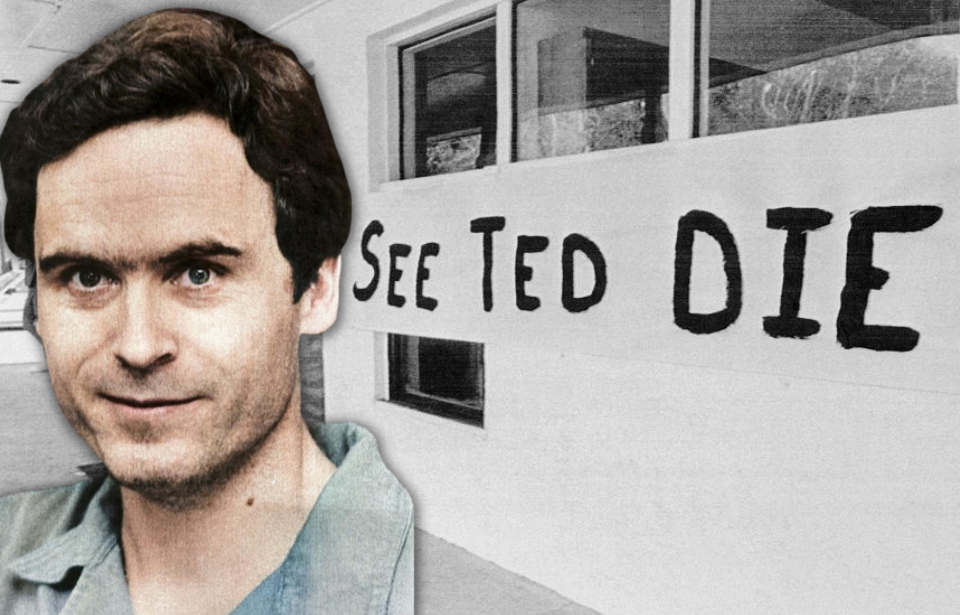On January 24, 1989, hundreds of people gathered outside Florida State Prison chanting, “Burn, Bundy, burn!” They were celebrating the death of Ted Bundy, one of America’s most prolific serial killers whose crimes had become the stuff of legend. People around the world tuned in to hear the news of the execution, a cathartic end to the terrifying killer who took the lives of at least 30 women including 12-year-old Kimberly Leach.
Making a murderer
Ted Bundy is considered to be one of the most recognizable killers in recent history. His charming and unsuspecting demeanor allowed Bundy to pass unsuspected for years before he was finally caught. Ever since, his crimes have captivated the media and spawned several successful movies, TV shows, and documentaries.
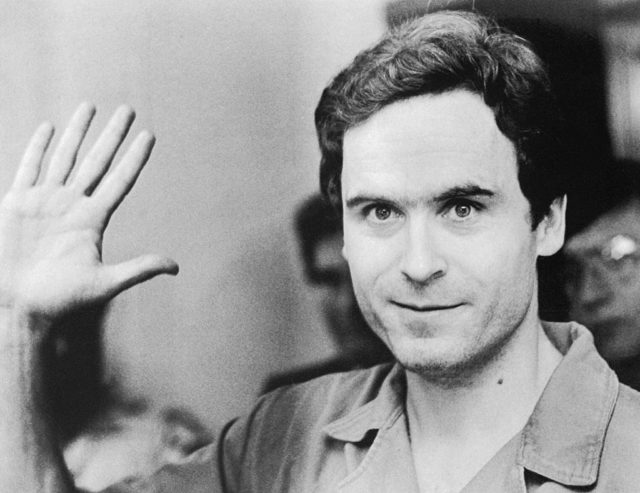
Bundy was born on November 24, 1946, in Vermont. Growing up, he was described as articulate and intelligent, but even at a young age, he began to exhibit characteristic signs of a serial killer. In police and psychiatric interviews, he described feeling antisocial as a kid. He also constantly got into trouble looking for windows to peer into to spy on unsuspecting women. His juvenile record was dismissed when he turned 18 – just one of many oversights that allowed Bundy’s murderous fantasies to become reality.
In 1972 he graduated from the University of Washington with the goal of becoming a lawyer, but just two years later he would begin to act on the dark urges he felt as he assaulted his first victim in 1974. Not long after, Bundy killed 21-year-old Lynda Ann Healy, his first murder. While living in Washington State, Bundy killed another seven women: Donna Gail Manson, Susan Rancourt, Roberta Parks, Brenda Carol Ball, Georgeann Hawkins Denise Naslund, and Janice Ott. All of the women we college students ranging from 18 to 23 years of age.
In August 1974, Bundy moved to Salt Lake City, Utah to attend the University of Utah Law School. He found law school to be incredibly challenging which was a “great disappointment” to him. He soon began killing, strangling an unidentified hitchhiker in Idaho before killing 16-year-old Nancy Wilcox, whose body has yet to be found. It is believed that another Bundy victim, Debra Kent, was buried in the same area as Wilcox. Melissa Smith, the teenage daughter of a local police chief in the Salt Lake City area was murdered by Bundy before he dumped her body in the mountains nearby. On Halloween 1974, Laura Aime became Bundy’s 11th known murder victim.
A week after Aime’s murder, Bundy approached 18-year-old Carol DaRonch at a mall while dressed as a police officer. He told DaRonch her vehicle had been broken into and asked to take her down to the police station, but as he attempted to handcuff her she fought him off and escaped.
America’s most wanted fugitive
In 1975, Bundy shifted his preferred hunting area from Utah to Colorado. He killed Caryn Campbell in early January and returned to the remote ski town of Vail, Colorado several months later where he killed ski instructor Julie Cunningham. Denise Oliverson disappeared from Grand Junction, Colorado in April 1975 while riding her bicycle to her parent’s house. On May 6, Bundy lured 12-year-old Lynette Dawn Culver from her school in Idaho and drowned her in his hotel room before disposing of her body.
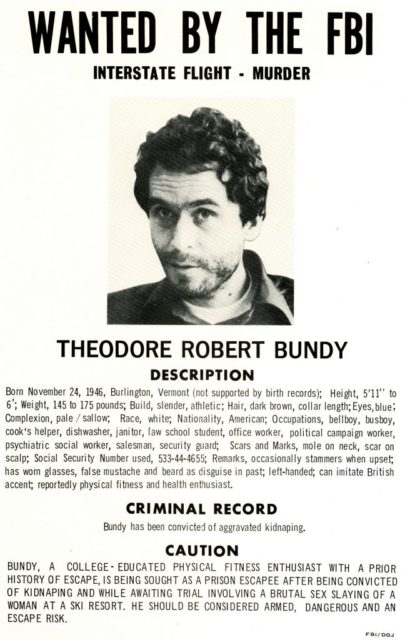
On June 28, Susan Curtis disappeared from Brigham Young University in Utah. Bundy confessed to her murder just moments before he entered the execution chamber. Her body, along with the remains of Wilcox, Kent, Cunningham, Oliverson, and Culver was never found.
As more murders appeared in Idaho and Colorado, investigators in Seattle, Washington, and Salt Lake City, Utah were starting to narrow in on Bundy. His affinity for moving his “hunting grounds” to different states initially helped to shield him from suspicion as police departments rarely communicated with one another outside of their jurisdiction. Around this time Washington State police were employing a new technique to help catch their killer: computers.
Computers in the ’70s computers were nothing like the ones we use today, but these giant, clunky machines did help investigators analyze the overwhelming amount of data they collected for all of the Seattle murder cases. By cross-referencing witness accounts and using databases, they were able to find similarities between many of the cases: a yellow Volkswagen Beetle, sex offenders, and the name Ted. Out of thousands of names with possible connections to these three clues, 26 of them matched across all of the lists, and one of those names was Ted Bundy.
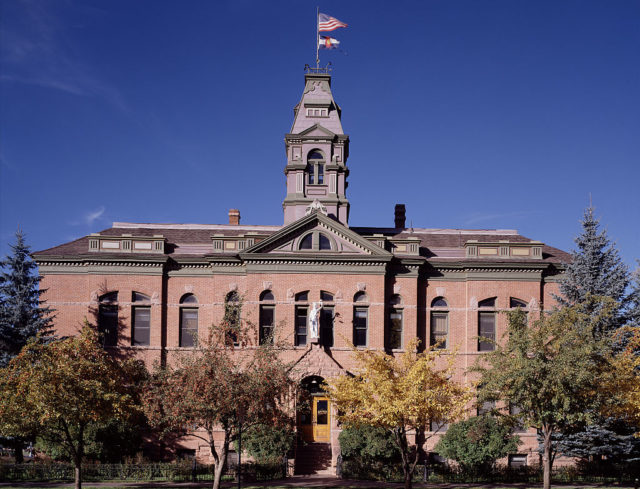
Almost as soon as they had named their suspect, Washington police received news of Bundy’s arrest in Utah. He was tried and convicted of the attempted kidnapping of Carol DaRonch, and soon Colorado authorities were able to connect him to the murder of Eileen Campbell. Bundy was transferred to Aspen, Colorado to stand trial for the Campbell murder. He managed to escape by jumping out a window in the Pitkin County Courthouse and was brought back into custody several days later. He escaped his Colorado jail cell the following December, fleeing to Florida where his final crimes would take place.
The beginning of the end
In the early hours of January 15, 1978 – one week after Bundy arrived in Tallahassee, Florida – he broke into a sorority house and bludgeoned 21-year-old Margaret Bowman before strangling her to death. He then entered the bedroom of 20-year-old Lisa Levy and killed her. He also attacked two other roommates, Kathy Kleiner and Karen Chandler. Bundy managed to flee the scene and evade capture.
On February 9, 12-year-old Kimberly Leach was asked to retrieve a forgotten purse from her homeroom but never returned to class. Seven weeks later, her remains were discovered partially mummified in a field. She was Bundy’s last victim, and also one of the youngest. Days later, a run-in with a police officer on patrol finally ended with the arrest of one of the FBI’s most wanted fugitives: Ted Bundy.
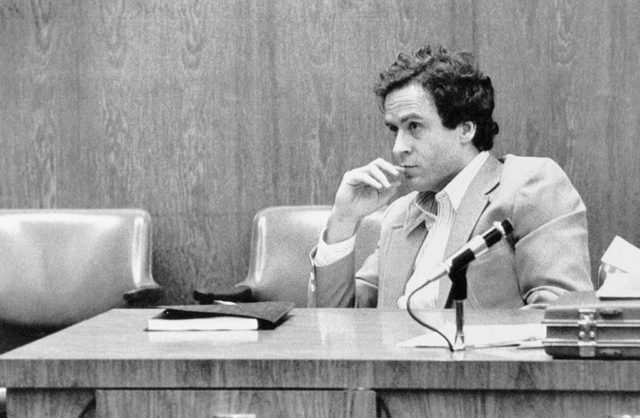
Bundy stood trial for the Florida sorority house murders in the summer of 1979. The trial was one of the most sensational to date, and the first murder trial to be televised on national TV. Two hundred and fifty reporters from around the world descended on Miami, Florida to watch as Bundy struggled to defend himself in court – despite his five court-appointed attorneys. For Bundy, the trial was his big break. He treated it more like a dog and pony show than a murder trial, entrancing viewers with his charm and wit and playing it up for the press. On February 10, 1980, Bundy was sentenced for a third time to death by electric chair.
While on death row, Bundy made several attempts to appeal his sentence but ultimately gave up and confessed to the deaths of some unidentified victims. While only 20 victims are confirmed, it’s believed he carried out at least 36 murders – some even speculate the number to be much higher.
Ted Bundy’s death
On the night before his death, Ted Bundy called his mother twice. Meanwhile, crowds gathered outside the prison with tents and beer, chanting and banging pans together in celebration of Bundy’s death. For his last meal, Bundy refused to make a selection and was offered the standard meal instead, which consisted of steak, eggs, hash browns, and toast. He didn’t eat the meal, choosing to go to the chair hungry.
Finally, on January 24, 1989, Bundy was marched into the execution room. According to the LA Times, 42 people attended the execution. When asked if he had any last words, Bundy sheepishly said: “I’d like to give my love to my family and friends.”
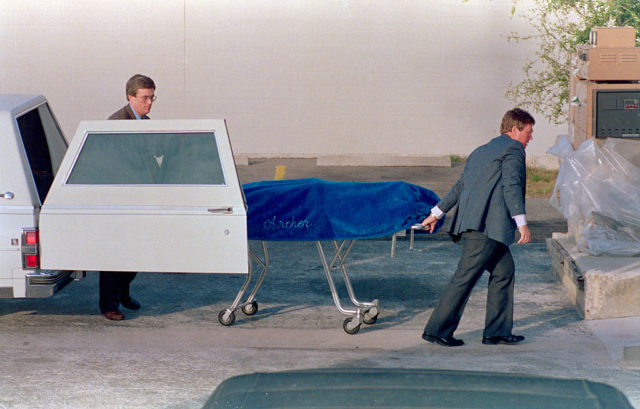
More from us: Dennis Rader: How The Horrifying BTK Serial Killer Hid in Plain Sight
Dr. Clark Hoshall was present at the execution and recalled the experience to crime writer Ann Rule for her book The Stranger Beside Me: The True Crime Story of Ted Bundy. “Bundy was uneasy and failed to keep eye contact before his death,” he said. “A leather strap extended from below the right side of the lower jaw diagonally across his face and was secured tightly above the left ear. The head strap compressed the nose laterally and squeezed Bundy’s left eyelids together. His right eye was open and looking straight forward.”
Then, he was strapped to the electric chair. A metal skullcap was placed on his head, with a black veil obscuring his face. With the push of a button by an anonymous executioner, 2,000 volts of electricity surged through Bundy’s body. His body tensed and a wisp of smoke came from his right leg. A minute after the machine was turned on, Bundy went limp and was pronounced dead at 7:16 a.m.
After his death, Bundy’s brain was removed to be studied for potential abnormalities or other contributing facts that could explain how a serial killer is created. Scientists didn’t find any evidence of injuries or other physiological problems in Bundy’s brain – an all the more horrifying footnote to his violent story. The rest of his body was cremated and his ashes were scattered in the Washington Cascade Mountains as per his request. The mountains are the same place where Bundy said at least four victims’ remains were dumped.
